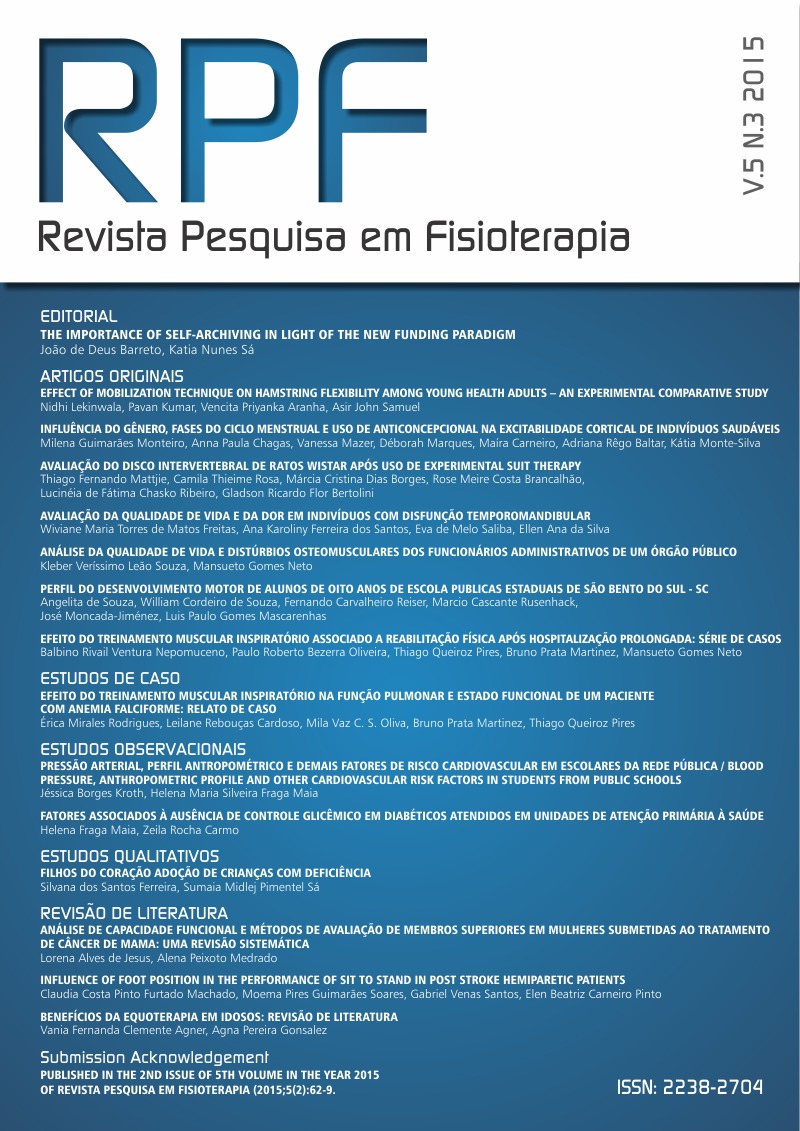INTERVERTEBRAL DISC EVALUATION OF WISTAR RATS AFTER SUIT THERAPY EXPERIMENTAL
DOI:
https://doi.org/10.17267/2238-2704rpf.v5i3.695Keywords:
Physical therapy specialty, Spine, Intervertebral disc degenerationAbstract
Objectives: Since overloading or improper pressure on the intervertebral disk structures can cause disc degeneration, this study aimed to evaluate an experimental model of suit therapy on the intervertebral discs of the thoracic segment of the column, evaluating the height at the anterior, medial and posterior portions, as well as the height of the nucleus pulposus. Methods: 30 Wistar rats were divided into 5 groups (G1 – control; G2 – simulating the use of the suit; G3 – 2 hours with a suit; G4 – 2 hours with adjusted weight; G5 – 2 hours with the dress and elastic bands). An experimental model of suit, type therapeutic jumpsuit was made. The experiment lasted 4 weeks, putting the garment on 5 consecutive days, with a break of two days. At the end of the thoracic spinal segment was dissected in the region of the intersection of elastic bands, between T7 and T10. The segments were fixed in formalin, cleaved along, in the median region, based on the spinous processes, cut into thick 7 ?m, and stained with hematoxylin-eosin (HE). Images were obtained and analyzed by photomicrography heights in the anterior, middle and posterior disc, and also the height of the nucleus pulposus. Results: there was no significant difference in the measurement of the evaluated heights. Conclusion: in the protocol compression disc provided there were no morphological changes of the thoracic intervertebral disc Wistar rats.



